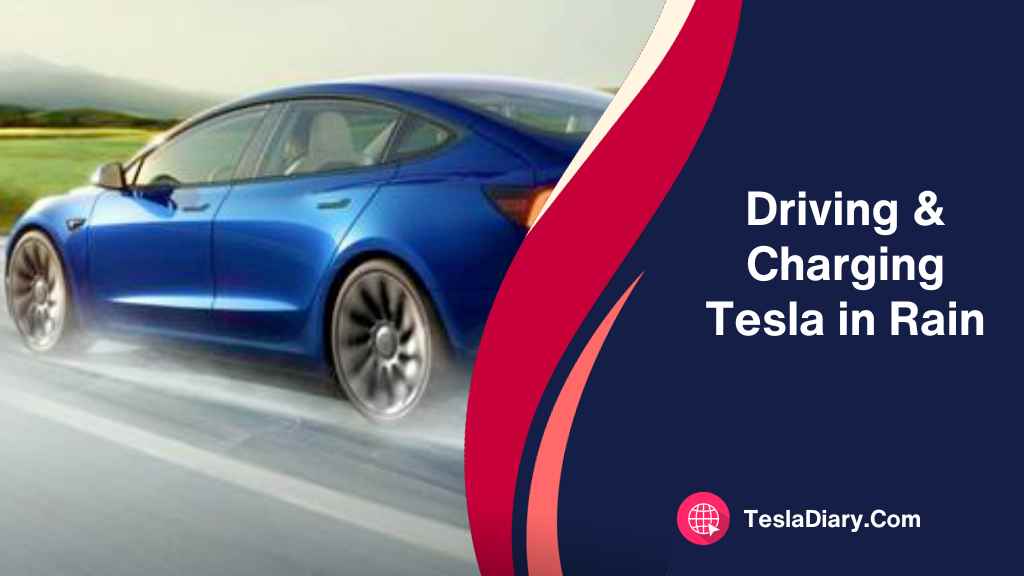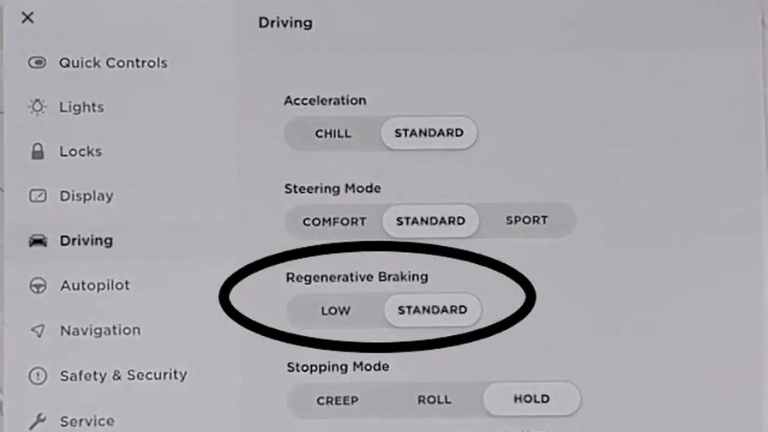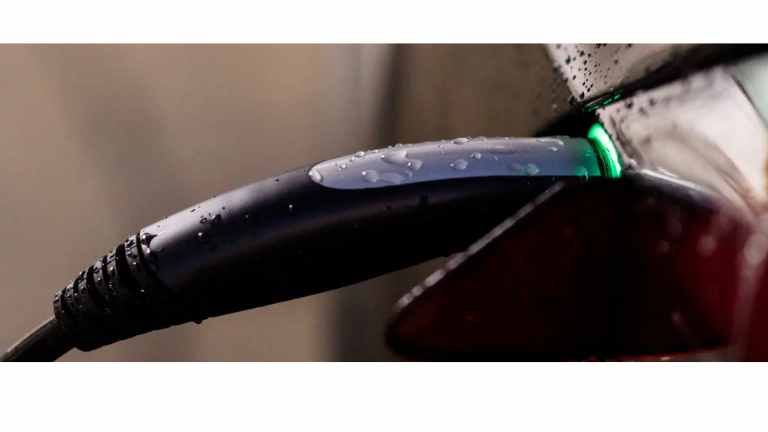Rainy weather can pose unique challenges when it comes to electric vehicles (EVs) like Teslas.
While these cars are built with advanced technology and safety features, there are still important considerations to keep in mind when charging and driving them in wet conditions.
In this comprehensive guide, we’ll explore the safety aspects of charging and driving your Tesla in the rain, providing you with valuable information and tips to ensure a safe and enjoyable experience.

Can You Drive a Tesla in the Rain?
Yes, you can drive a Tesla in the rain, just like any other car. Tesla’s electric vehicles are equipped with advanced traction control and stability systems that can provide excellent handling in wet conditions. However, there are specific safety tips to keep in mind when driving your Tesla in heavy rain:
Safety Advice for Driving Tesla in Heavy Rain
Tesla’s traction control system is highly advanced, continuously monitoring wheel speed and making adjustments to optimize traction. This technology allows Tesla vehicles to maintain stability and control in various weather conditions, including heavy rain. Still, you need to be cautious when driving in bad weather.
Check Tire Tread:
Ensure your Tesla’s tires have adequate tread depth. Good tire tread is crucial for maintaining traction on wet roads.
According to the U.S. Department of Transportation, tires are considered bald if the tread depth is 2/32 of an inch or less. For wet conditions, it’s recommended to have at least 4/32 of an inch of tread for safe driving.
Tesla Traction Control
Tesla vehicles come equipped with a “Traction Control” feature, which helps the wheels regain traction in slippery conditions.
This is turned on by default and whenever the car senses that the wheels are losing traction, it activates the Traction control automatically to avoid slip.

When activated, the yellow car sign will flash on your center touchscreen. However, if the sign stays on, it means there is an issue with the Traction control. To solve this, slow down your car and drive it to a Tesla service center.
Also, if you have turned on Slip Start for any reason previously, make sure to turn that off before you start to drive on a wet road.
Adjust Regenerative Braking:
Regenerative braking can be more aggressive in wet conditions, potentially causing the wheels to lock up.
Adjust the regenerative braking settings to a lower level in rainy, snowy, or icy conditions.
To adjust:
- Go to Controls
- Select Pedals & Steering
- From Regenerative Braking, choose Low level.

When the weather is comfortable, make sure to revert the setting back to Standard so that your car can keep saving power.
Increase Following Distance:
Wet roads can increase stopping distances. Maintain a safe following distance from the vehicle in front of you to allow for adequate braking.
According to the National Highway Traffic Safety Administration (NHTSA), on wet roads, it can take up to double the distance to stop compared to dry conditions. Adjust your driving accordingly.
Use Autopilot Cautiously:
Since your Tesla is equipped with Autopilot or Full Self-Driving features, you may be using that regularly. However, use them cautiously in rainy conditions.
These systems may not perform optimally in heavy rain, so be prepared to drive manually in adverse weather conditions.
Plan for Reduced Range:
Rainy weather can impact your Tesla’s range due to increased energy consumption for wipers, lights, and other systems.
Plan your trips accordingly and be aware that you may need more frequent charging.
Can You Charge a Tesla in the Rain?
Yes, you can charge a Tesla in the rain. Tesla vehicles are designed to handle various weather conditions, including rain & thunderstorms. They are equipped with stringent safety standards and waterproofing measures to ensure that charging remains safe even in wet conditions. However, while it is generally safe, there are some precautions you should take to ensure safety when charging your Tesla in the rain.

Safety Precautions to Take Before Charging Tesla in Rain
Tesla employs rigorous waterproofing measures in their vehicles to ensure safety in wet conditions. Tesla’s charging connectors, including the charge port and Supercharger stalls, are designed to resist water intrusion. Still, you should be cautious to have your possession safe.
Choose a Covered Charging Location:
Although it is safe to charge your Tesla in wet conditions, charge your Tesla in a covered area like a garage or carport whenever possible.
This provides an extra layer of protection against the elements.
Inspect Charging Equipment:
Before plugging in your Tesla, inspect the charging cable and connectors for any visible damage. Damaged equipment can pose safety risks, especially in wet conditions.
Since it is not ideal to check the charging equipment before every use, I recommend inspecting charging cables, charger, and port every couple of months to ensure everything is perfect.
Dry Connectors:
Make sure the connectors are as dry as possible before connecting them to your Tesla. Moisture can interfere with the charging process and potentially cause electrical issues.
Despite Tesla saying that it is okay for the connectors to be wet and the vehicle has safety mechanisms installed against this phenomenon, I have seen that wet connectors cause grounding issues.
Use a Ground Fault Circuit Interrupter (GFCI): Consider using a GFCI outlet for added protection. It can help detect and prevent electrical faults that might occur in wet conditions.
Avoid Puddles and Standing Water:
When positioning your Tesla for charging, ensure it’s not parked in an area prone to puddles or standing water. Standing water can lead to electrical shorts and damage to your vehicle.
Tesla superchargers are pretty well built and I haven’t seen water standing there unless the surrounding area is also submerged. This applies to the Destination charging stations.
Maintain Proper Cable & Port Management:
Ensure that the charging cable is not lying in a way that allows water to pool around the connectors or along the cable itself.
Periodically inspect your charging port for any signs of water intrusion. Tesla vehicles have weather seals, but over time, these seals may wear down.
Can All Electric Cars Get Wet?
While Teslas are designed to withstand wet conditions, the same may not be true for other electric cars. The ability to handle rain and wet roads varies between EV models, so it’s essential to check the manufacturer’s specifications and recommendations for your specific vehicle.
Additionally, it’s worth noting that older electric cars may not have the same level of waterproofing and safety features as newer models.
When considering the purchase of an electric vehicle, research the vehicle’s IP (Ingress Protection) rating, which indicates its resistance to dust and moisture. A higher IP rating suggests better protection against wet conditions.
Bottom Line
Tesla’s electric vehicles are well-equipped to handle rainy weather, both during charging and while driving. However, it’s essential to exercise caution and follow safety precautions to ensure a smooth and secure experience.
Regular maintenance and awareness of your Tesla’s capabilities in wet conditions are key to enjoying the benefits of electric driving while staying safe on the road, rain or shine.
With the right precautions in place, you can confidently charge and drive your Tesla in the rain, making the most of this cutting-edge electric vehicle technology.

